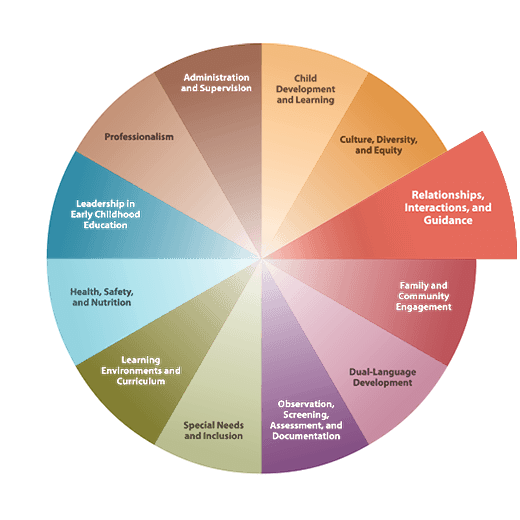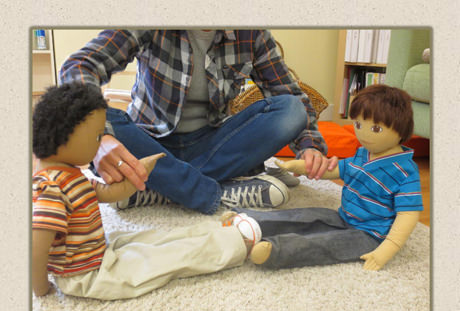This competency area describes the knowledge, skills, and dispositions that early childhood educators are expected to demonstrate in their relationships and communication with young children. Whether children’s development is supported or compromised by their participation in early care and education programs is determined in large part by the quality of their social–emotional experiences in those settings, including their relationships with adults and peers (National Research Council and Institute of Medicine 2000). Developmental and educational research has suggested that efforts to promote children’s school readiness should focus on supporting their social–emotional development as well as their cognitive development. Interactions and guidance are a fundamental part of the learning environments and curricula of early childhood programs (Center on the Social and Emotional Foundations for Early Learning [CSEFEL] 2009 and 2010). Thus, this competency area is closely linked to the Learning Environments and Curriculum competency area.
Download the California ECE Competencies
This document requires the Adobe Acrobat Reader. Download the plug-in.

Framing questions identify some of the major themes in this competency. They provide you with a starting point. As you explore this competency, add your own framing questions for issues you want to further examine.
Keep these dispositions in mind as you explore the Framing Questions. If you mindfully adopt these dispositions, you will realize the Desired Outcomes for Practitioners and for Children.
The CompSAT Keys to Reflection and Inquiry offer you a protocol to use in whatever setting you work as an early childhood educator. Learn how you can integrate the six Keys into your work. Select one of the Keys below to practice reflecting with questions related to the competency area of Relationships, Interactions, and Guidance.

Choose from one of the Keys below to view additional information related to this Competency!

Journaling is a great way to record your experiences, keep track of your questions, and make sense of your choices and their outcomes. Journaling lends itself nicely to portfolio work. It's largely a narrative format, but can be enhanced by the addition of photos, sketches, and doodles. Journaling can be done on the computer, or can it can be done using plain, blank notebooks, a pen, and colored pencils.
